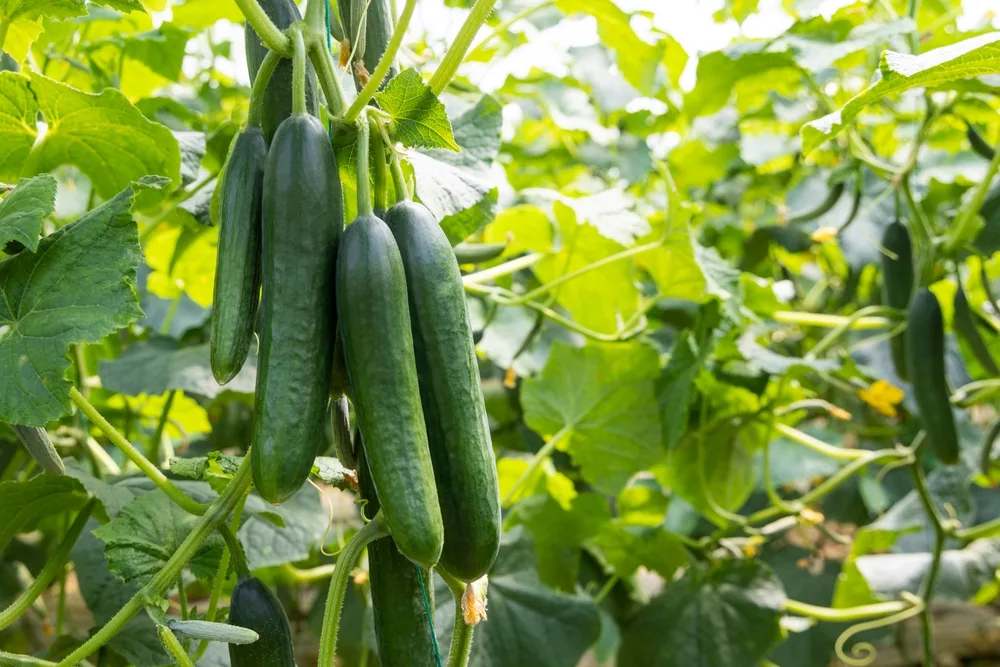Companion planting is a gardening practice that involves growing certain plants together to enhance growth, protect against pests, and improve flavor.
While this technique offers numerous benefits, it’s crucial to know which plants to keep apart to avoid negative interactions.

Cucumbers, a popular garden vegetable, have a few specific plants they don’t get along with. Understanding these incompatible pairings can help ensure a healthy, productive garden.
1. Potatoes
One of the key plants to avoid planting near cucumbers is the potato. Both cucumbers and potatoes are susceptible to the fungal disease known as blight.
Blight can devastate crops, spreading rapidly and causing significant damage. When cucumbers and potatoes are planted close to each other, the risk of blight increases.
The spores can easily transfer from one plant to the other, making it difficult to control the spread of the disease.
By keeping these two plants separate, gardeners can reduce the likelihood of a blight outbreak, ensuring healthier cucumber and potato crops.
2. Aromatic Herbs
Aromatic herbs such as sage and basil are popular in many gardens due to their culinary uses and pleasant scents.
However, these herbs can inhibit the growth of cucumbers. The strong scents and chemical compounds released by these herbs can interfere with the growth hormones of cucumbers, leading to stunted growth and reduced yields.
Basil and sage, in particular, should be planted well away from cucumber plants. Instead, consider pairing cucumbers with herbs like dill, which can attract beneficial insects and improve cucumber growth.
3. Melons
Melons, including watermelons and cantaloupes, belong to the same plant family as cucumbers: the Cucurbitaceae family.
While this might suggest they could be good companions, it actually means they share similar pests and diseases.
Planting melons near cucumbers can increase the chances of a pest wipeout. Common pests like cucumber beetles, squash bugs, and aphids can easily migrate from one plant to the other, causing extensive damage.
Additionally, diseases such as powdery mildew can spread rapidly between these closely related plants. To protect your cucumber crop, it’s best to plant melons in a different part of the garden.
Other Considerations
In addition to the specific plants mentioned above, it’s important to consider other general principles of companion planting with cucumbers.
Avoid planting cucumbers in the same spot year after year, as this can lead to a buildup of pests and diseases in the soil.
Crop rotation is essential for maintaining soil health and preventing problems. Also, ensure that cucumbers have adequate space to grow and are not overcrowded by other plants. Proper spacing allows for good air circulation, which can reduce the risk of fungal diseases.
Positive Companions
While it’s important to know which plants to avoid, it’s equally beneficial to know which plants make good companions for cucumbers. Some positive companions include:
- Radishes: These can help deter cucumber beetles.
- Beans: They provide nitrogen to the soil, which benefits cucumber growth.
- Marigolds: These flowers repel a variety of pests that can harm cucumbers.
- Corn: Provides a natural trellis for cucumbers to climb, saving space and improving air circulation.
By strategically planning your garden layout and being mindful of plant interactions, you can create a thriving environment for your cucumbers.
Understanding which plants to avoid and which ones to pair with cucumbers is a key step in successful companion planting.
With a little knowledge and careful planning, you can enjoy a bountiful cucumber harvest and a healthy, vibrant garden.
